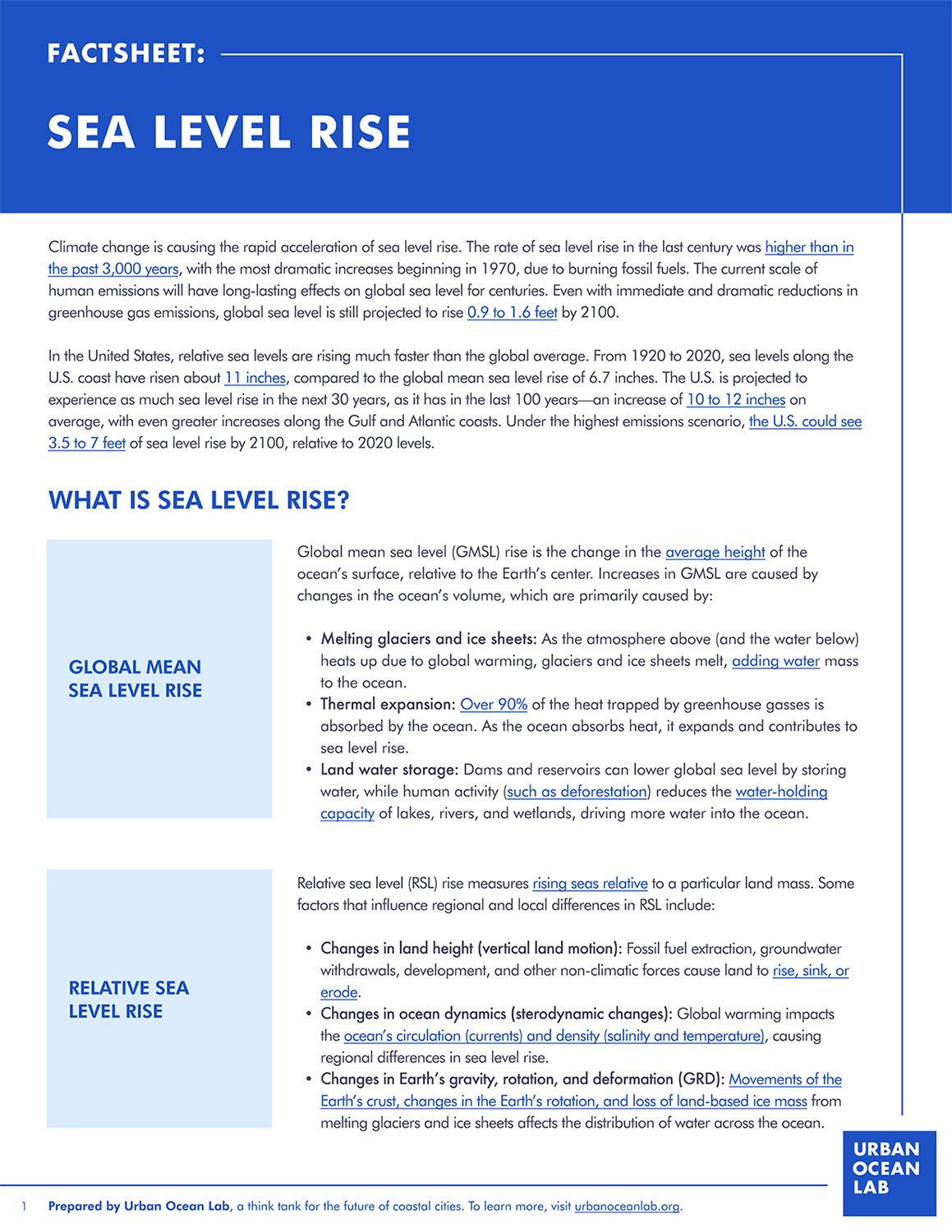Key recommendations
Immediately reduce greenhouse gas emissions
Sea level rise projections vary dramatically depending on future emissions scenarios. By 2100 , global sea level could rise up to 2 feet (under a low emissions scenario) and up to 3.6 feet (under a high emissions scenario). If global temperatures reach 2 to 3 degrees celsius by 2100, global sea level could rise up to 33 feet over the next 2,000 years. To avoid catastrophic sea level rise and keep global warming below 2 degrees celsius by 2100, human-induced greenhouse gas emissions need to be halved by the end of the decade and completely eliminated by 2050.
Center equity in adaptation
Flood adaptation, like seawalls, home elevations , and home buyouts , have long favored wealthier and whiter neighborhoods, widening existing racial-wealth gaps in the U.S. We need to avoid “colorblind” adaptation planning , which ignores the ways in which structural inequality affects coastal communities. Instead, we must acknowledge and address the historical patterns that make people of color in coastal communities more vulnerable to the effects of sea level rise.
Prioritize nature-based solutions
Protect and restore coastal ecosystems , which act as natural buffers to the impacts of storms. They reduce wave energy, absorb floodwaters, and prevent shoreline erosion , and often offer better coastal protection than hard structures, like seawalls, and are significantly less expensive. Coastal ecosystems can also sequester several times more carbon per acre than tropical forests. The White House recognized the importance of nature-based solutions for coastal ecosystems, and Congress has allocated over $4 billion ($2.6 billion through the Inflation Reduction Act and $1.5 billion through the Climate Ready Coasts Initiative specifically for coastal communities to implement nature-based solutions and better protect coastal ecosystems.
Think before we (re)build
Across the U.S., coastal areas are seeing the highest rates of population growth and development , resulting in the (re)construction and densification in risky waterfront areas that have been repeatedly damaged. Sea level rise mitigation can only go so far. In some places, it may not make sense to (re)build and climate-driven relocation may be unavoidable. Local governments can prevent development in high-risk areas, through climate-smart zoning and land-use planning. In addition, several federal agencies, such as the Federal Emergency Management Agency, offer some resources to coastal communities seeking to relocate. In 2022, the White House allocated $115 million for 11 Indigenous communities to relocate in response to climate impacts.
